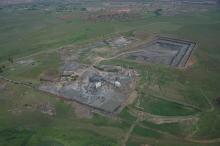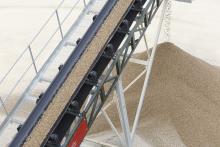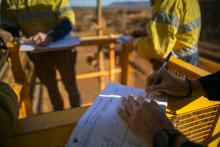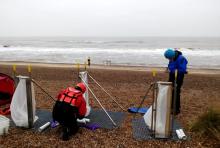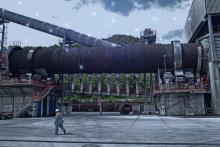Nico Pienaar, director of South Africa surface mining industry organisation ASPASA, says the requirements of the relevant Mine Health and Safety Act Explosives Regulations, 2018 - Regulation 4.16(2) are clear and should provide a minimum base-line for procedures to ensure safe blasting. The regulation covers all aspects of the requirement, and in addition to providing safe blasting, compliance with the regulation mitigates legal action in the event of a mishap.
“In order to understand the regulation it is best to break it down to basics, and it is important to note that it needs to be applied wherever blasting operations are to be carried out within a horizontal distance of 500m from structures and places which may be necessary to protect to prevent any significant risk, and to provide some guidelines regarding the application to be submitted to the Principal Inspector of Mines (PI) for written approval.
Assessing risks
“The employer must also take reasonable measures to ensure that no blasting operations are carried out within a horizontal distance of 500 meters of any public building, public thoroughfare, railway line, power line, any place where people congregate or any other structure, which it may be necessary to protect in order to prevent any significant risk.
“This is unless a risk assessment has identified a lesser safe distance and any restrictions and conditions to be complied with or a written application is submitted to the PI accompanied by the following documents for approval- (i) a sketch plan indicating the distance from the blasting area to the affected structures; (ii) the risk assessment; (iii) a proof of consultation with the owners of the affected structures; and (iv) restrictions and conditions. (c) the Principal Inspector of Mines has granted written approval; (d) any restrictions and conditions determined by the Principal Inspector of Mines are complied with.
“The Regulation provides clear requirements for the application to be submitted to the PI for decision - Reg. 4.16(2) (a) and (b) The application must provide the following safety, technical and legal aspects:
- Risk assessment in consultation with the explosives supplier and other subject matter experts Identify structures and places to be protected
- Determine the minimum distance blasting to be carried out
- Specify and Articulate Measures to limit blast-induced hazards including recommended restrictions and conditions (air blast, ground vibrations and fly rock and dust)
- The application must prove consultation with the owners of the affected structures and how any concerns will be addressed
- Monitor blast hazards (air blast, ground vibrations and fly rock and dust)
Measuring blasts
“Limiting and measuring of blasting-related hazards is an interesting and complex field, which can fill an entire book. But, if we limit the discussion to a high-level overview relevant to airblast and ground vibration, it is clear to see the complexity. Although numerous regulations place the onus on the mine owner to ensure that the blasting operations do not cause damage to private property, there are no statutory limits for airblast and/or ground vibration, laid down in South African law.
“The mine owner, in turn, relies on advice from experts such as engineers employed by the major suppliers of explosives or independent consultants. The South African Bureau of Standards (SABS) adopted the International Organization for Standardization (ISO) standard ISO4866 (2nd edition in 2010) which provides guidelines for the measurement of vibrations and evaluation of their effects on fixed structures, not safe limits of vibration for structures.
“Explosive manufacturers and suppliers in South Africa generally play a key role and make recommendations based on the USBM RI 8507 limits tables: Maximum PPVs at frequencies below 50 Hz are recommended for a variety of building types; Maximum charge sizes (per delay) for a range of distances to ‘typical’ and ‘sensitive’ structures. Compilation of vibration limits for civil and engineering structures such as power lines, roads, pipelines and conveyors.
“Where to measure? Field Practice Guidelines for Blasting Seismographs, published by the International Society of Explosives Engineers (ISEE, 2015), is the industry standard for the correct monitoring of blast vibrations. Monitoring equipment: All monitoring equipment must be calibrated at least annually, and operated by trained persons.
Community relations
“To effectively address community complaints, demands and subsequent production losses, it is critical to determine the actual limits for a specific blasting operation, before designing a solution. Although International acceptable standards like the US Bureau of Mines (USBM) and The US Office of Surface Mining Reclamation and Enforcement (OSMRE) study publications are well known and applied in South Africa, it is important to acknowledge site-specific factors.
“To address these challenges, it is sometimes more important to understand and address the reasons for the community complaints, rather than the possibility of actual blasting-related hazards. More often than not, it may be necessary to distinguish between fear of actual blast damage and blast nuisance or irritation”.
“Therefore, the strategy to design at much lower limits than International acceptable limits. The type and quality of structures are also important factors to determine actual acceptable limits, rather than international acceptable limits tables. In order to prevent damage, numerous strategies can be applied, such as the accurate control of mass explosives per delay and the management of ground vibration and airblast. It is important that the mine understands the initiation point and timing and applies suitable electronic blasting systems.
Other requirements
A risk assessment is also required in order to prevent hazards and should be conducted in consultation with the explosives supplier to identify a lesser safe distance, restrictions, and conditions to be complied with.
A rock engineering consultant should also be consulted to for a risk assessment in support of applications to blast to 50m of railway line and the 11kV power line beyond. Consulting engineers should compile a report of risk compliance to blast within a 500m radius from the identified structures.
A drill and blast procedure is required when blasting is to be carried out within 500m to ensure drilling and blasting is executed as designed. A sketch plan is also required to indicate the distance from the blasting area to the affected structures.

